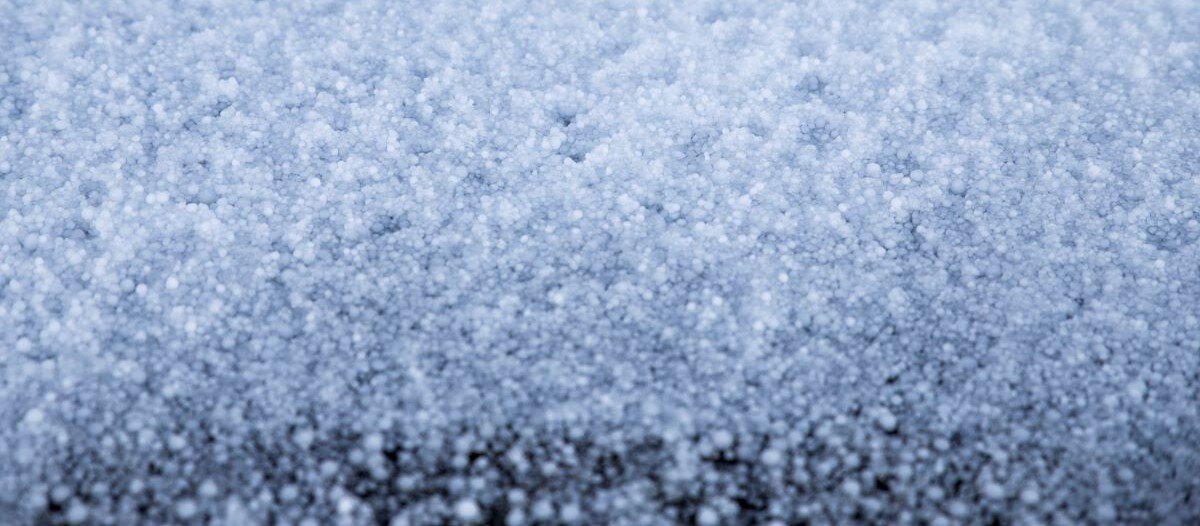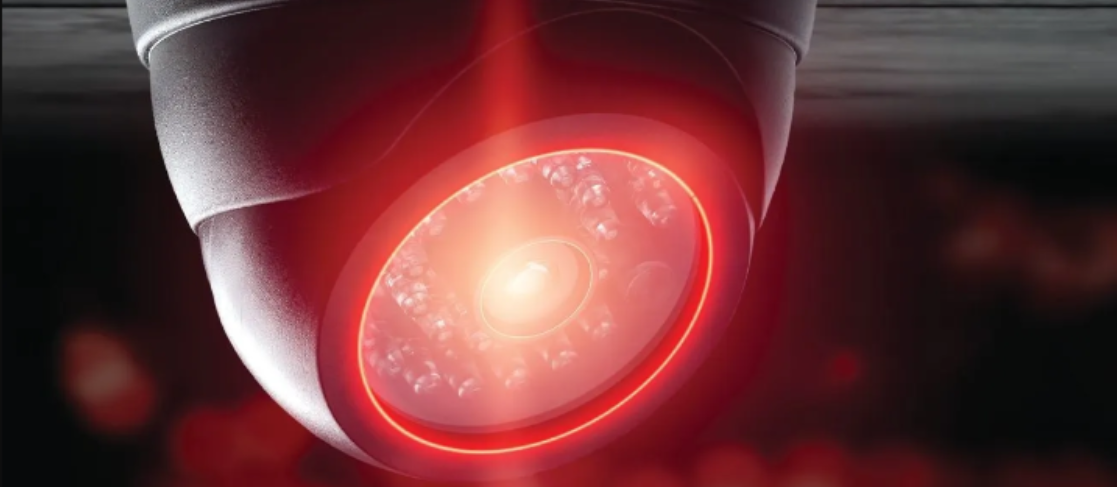Facing Hail Damage
The need for resilient roofing

The growing cost of hail
In the first half of 2023, nearly 70 percent (US$35 billion) of insured losses worldwide were caused by severe convective storm damage according to the Swiss Re Institute. Hail, the main loss driver of storm damage, continues to be a growing problem as storms become more frequent and more severe, and as populations are increasingly extending into hail-prone areas.
Facility managers and maintenance staff strive to keep commercial buildings in good condition and operation. Often, this includes selecting the best building materials for repairs and upkeep, especially when it comes to the roof.
Asphalt shingles are the most used roofing material and often perform poorly when subjected to a hailstorm. To combat this issue, manufacturers created impact-resistant asphalt shingles, designed to better withstand hail damage. Polymer modified asphalt (PMA) shingles are typically more resilient than traditional oxidized shingles due to their rubber-like qualities, making them more malleable and resistant to hail damage. As hailstorms increase in frequency and intensity, property owners and builders are choosing impact-resistant materials, such as PMA shingles, hoping to increase structural resiliency and avoid costly repairs. Thunderstorms can, and often do, produce hail, so long-lasting and durable roofing material is a vital component to a structure's overall resiliency.
Gaps in knowledge led to underperforming standards
To qualify for the impact-resistant label, roofing products must pass a standard materials test; the UL 2218 impact test standard is the most common for asphalt shingles. Developed in the mid-1990s, the test involves dropping steel balls of various sizes from a set height, hitting a target area twice. The shingle is then assessed for cracks underneath. Using this test standard, products are graded on a pass-or-fail basis and receive a rating from Class 1 to Class 4, with 4 providing the most protection.
While the UL 2218 impact test standard is beneficial for testing roofing materials against falling debris, it cannot accurately recreate the impact of real-world hail, as the damage created by steel balls and hailstones is starkly different.
The anatomy of hail
The Insurance Institute for Business & Home Safety (IBHS) is a nonprofit that researches ways to strengthen homes and businesses to reduce damage caused by severe weather and wildfire.
Since 2012, IBHS has conducted large-scale field studies to better understand hail’s natural properties. This includes collecting stones from storms across the United States and measuring the diameter, mass, strength and energy on impact of various stones. IBHS researchers also use 3D scanning technology to record hailstone shapes.
From these field studies, IBHS has gained a better understanding of hail’s natural characteristics and how they can vary in size, shape and density. Multiple factors play into hail stone formation, including gas trapped during freezing, the time it takes for freezing to occur and the external temperature as a stone falls. Changes in these factors result in various types of hail, which cause different impacts and subsequent damage.
Hail impacts are categorized into three types:
- Hard shatter – a stone shatters on impact, causing shrapnel-like damage to the shingle.
- Hard bounce – a stone bounces on impact, remaining largely intact, causing larger dents to occur in the shingle.
- Soft impact – a stone crumples on impact, becoming the texture of slush and often sticking to the impact surface, causing a shear force to be applied to the granules of the shingle.
From these impacts, three types of damage can occur:
- Dents – indents with raised ridges
- Tears – cracks, fractures or breaks left in the material, which can lead to water intrusion into the building
- Granule loss – loss of the protective grit coating, which shields the asphalt from the UV radiation of the sun
Hard-type impacts are more likely to cause dents or tears, both of which can leave the decking beneath the impacted shingles more vulnerable to leaks, allowing water to enter the structure. While all three impacts can cause granular loss, soft impacts tend to result in the greatest granule loss. While this does not pose an immediate threat, granule loss can expose the asphalt to UV radiation, causing the asphalt to become brittle and break. Continued granular loss from hail or other types of damage will increase degradation and limit the roof’s lifetime.
Designing a new standard
As IBHS hail research continued, it became clear standard hail tests were not representative of the real-world damage hail can cause, as observed by researchers during hail field deployments. To address this, researchers designed a machine to replicate the mass, density and structure of hailstones seen in the field. They were able to more accurately test shingle performance against hailstone damage and measure each product’s performance on a scale instead of a binary pass or fail, leading to the development of the Impact Resistance Test Protocol for Asphalt Shingles.
For each round of testing, researchers evaluate the impact of 20 two-inch hard hailstones and 20 two-inch soft hailstones on each product. A shingle is impacted only once, and damage is observed from the top of the shingle to represent realistic hail damage more accurately.
To eliminate bias and mistakes from human assessment, IBHS created imaging software that uses multiple photos to reconstruct a 3D rendering of the impact. This software accurately measures dents, ridges and individual/patch granule loss.
Shingle ratings
 IBHS researchers used findings from the Impact Resistance Test Protocol to develop the Impact-Resistant Shingle Performance Ratings. For the first ratings released in 2019, IBHS tested eight commercially available impact-resistant asphalt shingles purchased through normal distribution channels to best represent the products available to consumers. Researchers assessed material performance across the three identified damage types and provided an overall rating of excellent, good, marginal or poor.
IBHS researchers used findings from the Impact Resistance Test Protocol to develop the Impact-Resistant Shingle Performance Ratings. For the first ratings released in 2019, IBHS tested eight commercially available impact-resistant asphalt shingles purchased through normal distribution channels to best represent the products available to consumers. Researchers assessed material performance across the three identified damage types and provided an overall rating of excellent, good, marginal or poor.
The test results in the first ratings were mixed, with one product receiving a poor rating overall. This allowed manufacturers to see and address performance gaps, and in some cases, remove poor performing products from the marketplace altogether. In addition to retesting materials every two years, IBHS evaluates any new products that enter the market within six months of release to provide consumers and contractors with the information needed to make an informed product choice.
Changes in the industry
Since that first iteration of ratings, there have been drastic marketplace changes. In the scheduled 2021 update, nine products were tested, with eight receiving an overall rating of Good or Excellent. In the 2023 Roof Shingle Hail Impact Ratings, nine products received a good or excellent overall rating from IBHS, but many received lesser scores in specific damage modes compared to previous years.
Tips for protecting against or reducing hail damage in commercial facilities
Even if there are no obvious effects from a hailstorm, the quality of a structure’s roof cover can be weakened with each storm. In hail-prone areas, a commercial roof may be battered by hail year after year, making it important to prioritize resiliency. For commercial property owners looking to re-roof, roof material should be selected with local weather in mind. When assessing or replacing a property’s roof, work with the insurance company to locate a licensed adjuster and use local contractors with proper licenses and accreditation.
Other recommendations to strengthen a building’s roof include:
- Always use an asphalt shingle rated Good or Excellent in IBHS’s Impact-Resistant Shingle Performance Ratings.
- For commercial buildings with flat/low sloped roofs systems, use roofing products rated Class 4 for the most protection from hail impacts.
- Take steps to protect roof-attached equipment, including the use of hail guards and screens.
- For retrofitting an existing roof, apply closed-cell spray foam to the underside of the roof.
- Seal the roof deck and tape seams between the decking and other joints to protect the roof deck from being damaged by long term water leaks. A sealed roof deck is part of IBHS’s FORTIFIED standard, a voluntary, beyond-code construction and re-roofing method that strengthens buildings to hail, high winds and heavy rain and a good option to consider when re-roofing or building a new commercial property.

Christopher Sanders spent the better part of a decade as a licensed insurance adjuster where he performed roof inspections that were used in underwriting the insurance policy for the property. He would later go onto do his master over the wind driven damages caused by Hurricane Harvey, based on insurance claims. At the Insurance Institute for Business and Home Safety (IBHS) he oversees the hail impact research of building envelope products.

Chuck Miccolis provides engineering and technical support for commercial building–related hazard mitigation initiatives. He is the lead engineer for the Institute’s FORTIFIED Commercial standards, a voluntary commercial construction criterion that focuses on building resiliency and mitigating losses from natural and human-caused hazards. He works with IBHS colleagues, member companies, and industry trade organizations on program development, mitigation, field research, and testing at the IBHS Research Center. Prior to joining IBHS, Miccolis was in the commercial property insurance business for more than 20 years.
Read more on Operations & Maintenance , Real Estate and Risk Management
Explore All FMJ Topics









